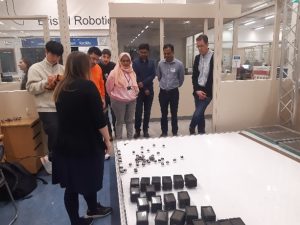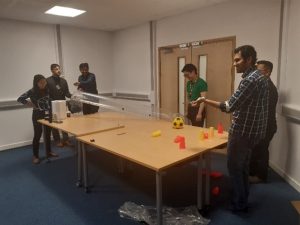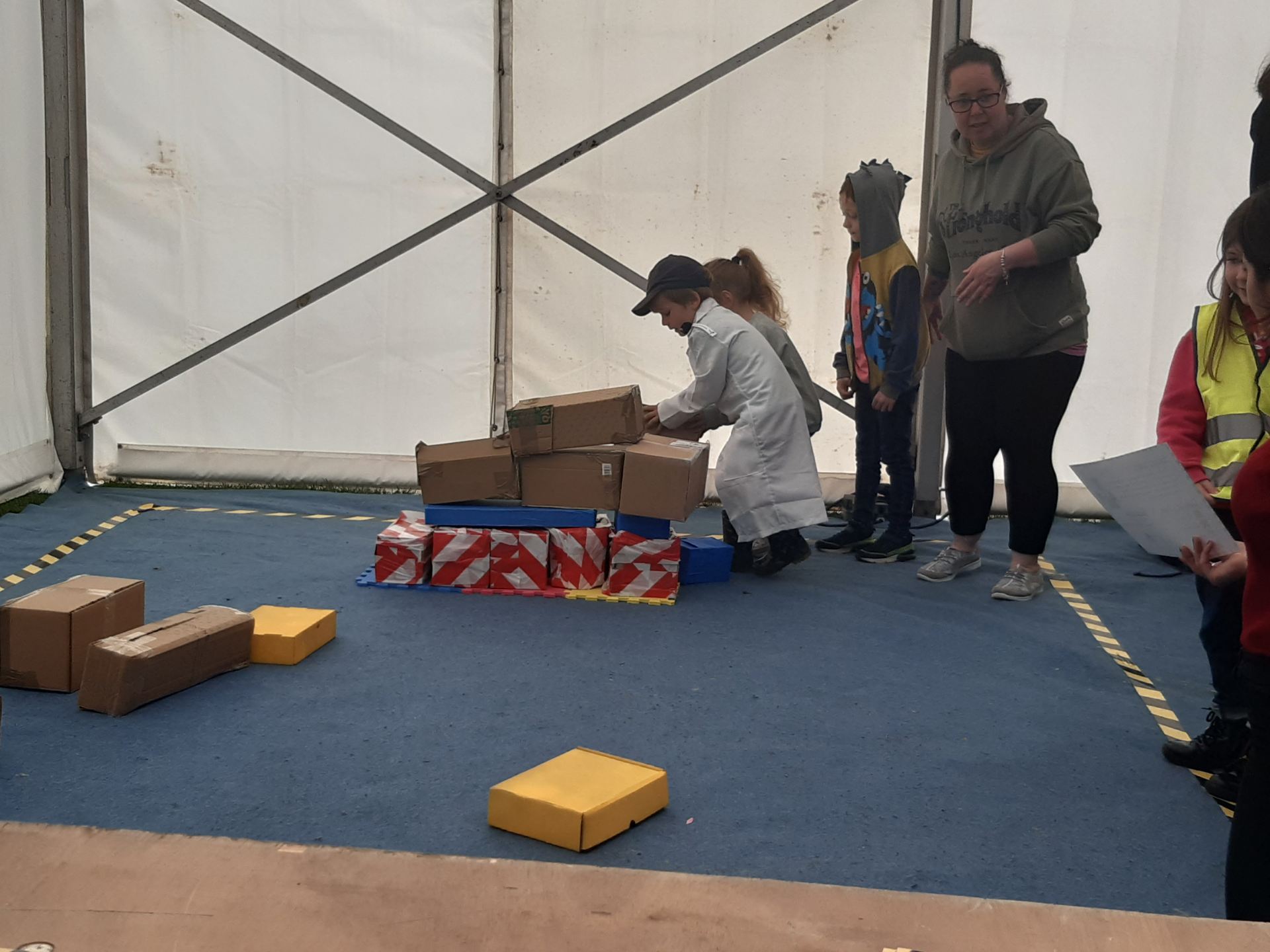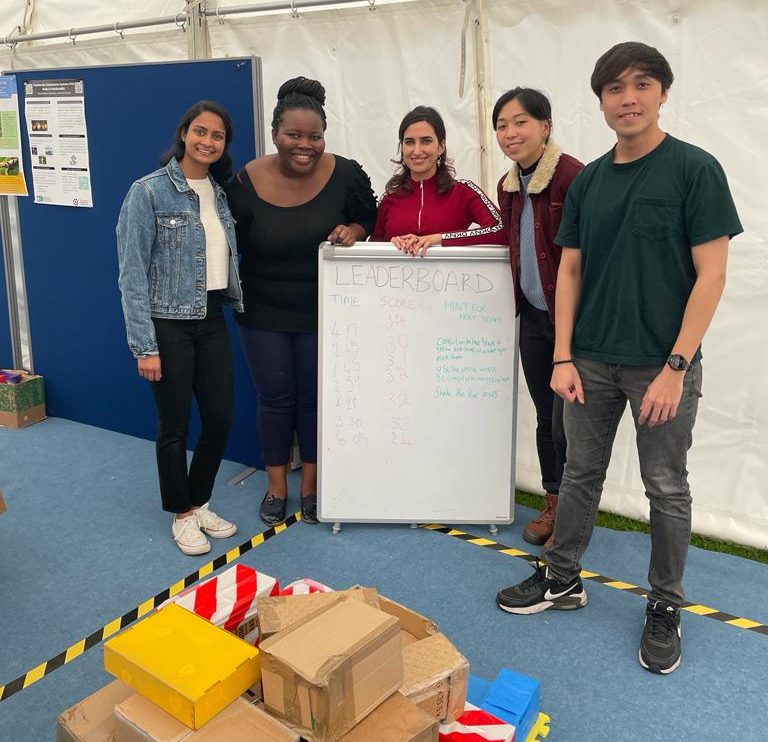TAS Functionality Node invited developers, operators, end users and researchers to attend two masterclasses in April and May, taking place at Bristol Robotics Laboratory. Participants heard about the TAS Node project, its recent outputs and the test cases in swarm, soft and aerial robotics- and how these autonomous systems may be deployed in logistics, manufacturing and infrastructure industries. They then explored the capabilities of these technologies in soft and swarm robotics via an interactive ‘teaching and doing’ format. One participant Peta Masters, from King’s College, London thanked us for delivering “a terrific masterclass last Thursday and for showing us around the robotics lab, which I thought was just fabulous. What an exciting place to work. Really inspiring.”

In the swarm workshop the participants got to programme a swarm of robots and see their simulation enacted.

Participants were split into 3 teams, each responsible for programming one of the robots in the swarm. The objective was to get the robots to pick up a carrier without bumping into obstacles. Each team started by simulating programming their robot’s behaviour and testing it out through simulations. Then they got to transfer the code to the robots and see their algorithm plays out in real life.
In the soft robotics workshop, participants tried two different demos to show how easy it is to build a soft robot but how complex it is to control.

In the first demo, they built a soft continuous manipulator with a polythene roll they had to cut and hermetically seal. The manipulator was then inflated through a compressor, and participants had to figure out how to control it to bring down objects in specific positions without touching other things simultaneously. Due to their nature, soft robots have theoretically infinite degrees of freedom. The idea was to move it through cables, but the problems they had to solve were: Where are the best places to stick cables? How many cables do we need? In addition, cables needed to be guided along the structure; how much room do we have to leave between each guide? They experimented with how the behaviour of soft manipulators can change dramatically, only changing these aspects.
The second demo was about soft grippers and modularity. As we said before, soft robot control can be very complex, so if we divide the problem into smaller problems, would it be easier to control a soft robot? This is the thinking behind a modular soft gripper. Participants were asked to assemble a soft gripper joining together different pieces..
Lastly everyone learned more about cobotics (collaborative robots) by using the soft gripper they assembled with a traditional gripper mounted on the robotic arm UR10. In this collaborative simulation, one person had to operate the soft gripper, another the robotic arm, and another the hard gripper.
Thanks to everyone who came to try out our masterclass!




